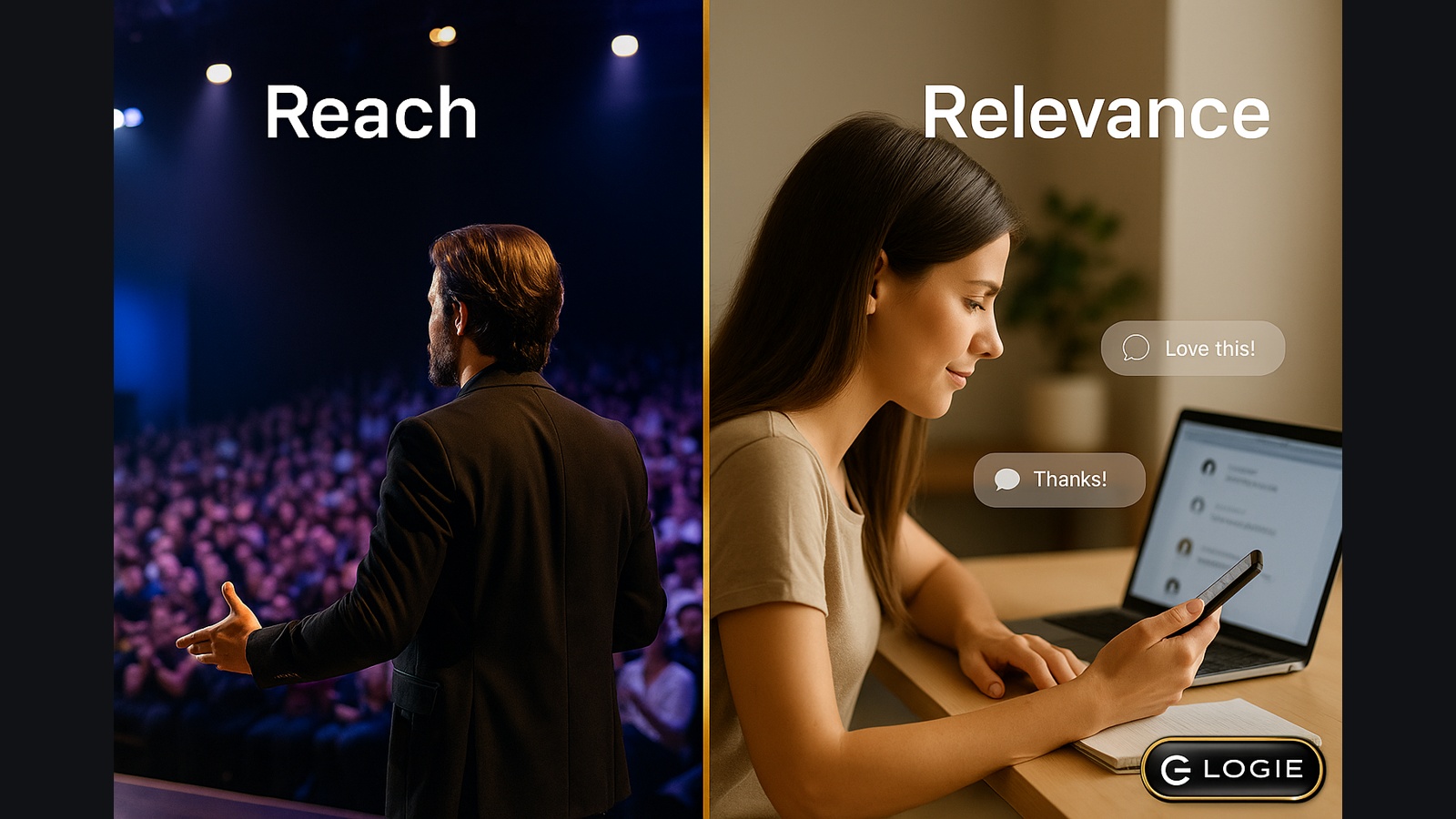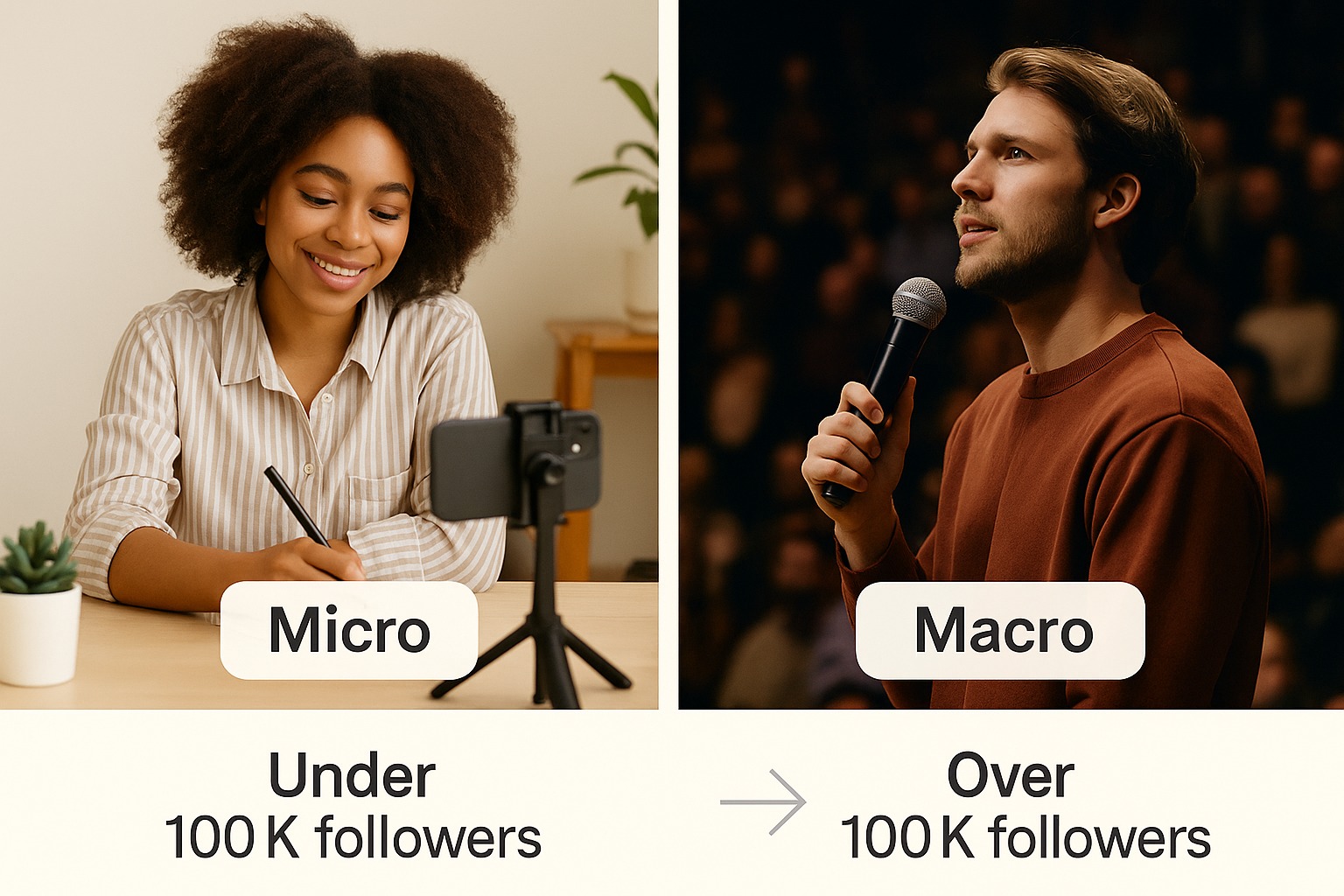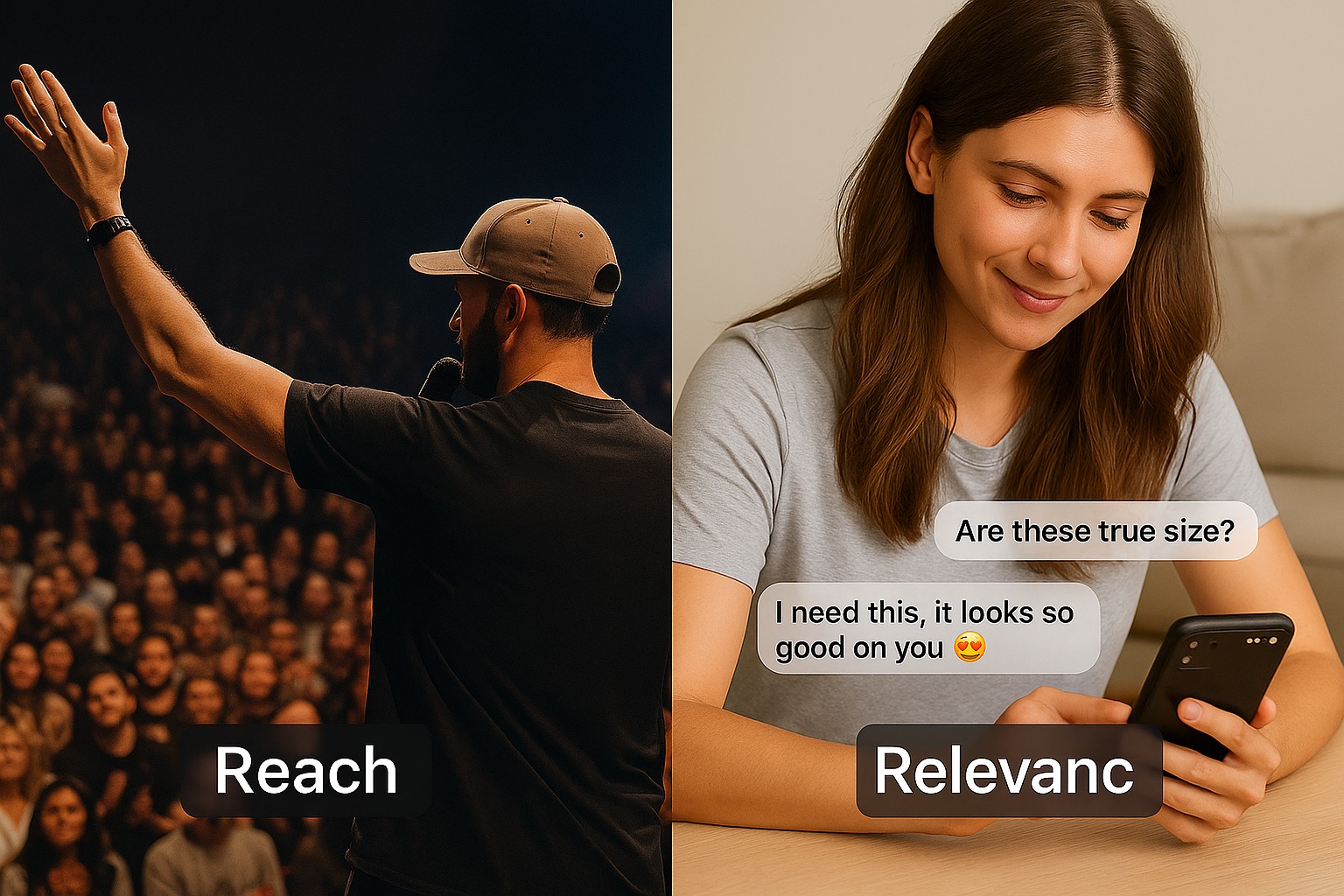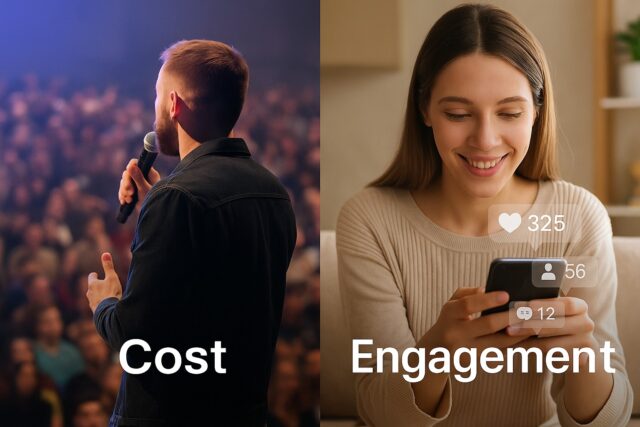You’re not really choosing big vs. small. You’re choosing reach vs. relevance, awareness vs. conversion, and cost per impression vs. cost per action.
Micro-influencers (often 10K–100K followers) tend to deliver tighter targeting and higher engagement at friendlier costs, while macro creators (100K–1M+) deliver instant scale and polish usually at a premium and with lower average engagement.
Recent benchmarks continue to show smaller tiers punch above their weight on engagement, which is a big reason micro programs so often win on ROI.
Our recommendation: prove with micro, scale with macro, treat creators like a portfolio, seed many small bets, and double down on what converts.
1) Micro influencers
Most marketers categorize micro creators into the 10K–100K follower range (with some platforms using 10K–50K).
They’re niche-focused, closer to their audience, and typically see stronger comment/save behavior than bigger accounts.
If your goal is trust + action (reviews, email signups, sales), that intimacy is a feature, not a bug.
If you haven’t run micro before, start with 20–50 creators in one niche and standardize how you brief, track, and pay small sample sizes.
Why this tier works: Engagement generally declines as size rises on Instagram, and independent trackers keep seeing higher rates for smaller tiers.
That doesn’t mean “never use macro,” but it does mean your first tests should lean micro unless you’re launching a category story that truly needs mass reach.
2) Micro vs. macro
Micro (10K–100K)
- Strengths: Higher average engagement; niche relevance; more authentic UGC; lower fees.
- Trade-offs: Smaller individual reach; more creators to coordinate.
Use when: You need conversions, reviews, or signals (such as hooks, offers, or angles) before scaling your spend.
Macro (100K–1M+)
- Strengths: Big, fast reach; legitimacy for launches; often higher production value.
- Trade-offs: Lower average ER and higher fees; performance is sensitive to message market fit.
Use when: You need to increase awareness and speed after validating creative and offers with micro.
Build a full-funnel mix micro to validate and drive action, macro to amplify what’s proven.
When you do buy macro, lock usage rights so you can run the creator’s post as paid for 60–180 days. This is often where the real returns show up.
3) Micro influencer marketing: make it pay (playbook)
How to brief (keep it crisp):
- 1–2 key messages, not scripts.
- “Two-cut” content: 15–30s hook for discovery + 60–120s explainer for objections; the pair tends to outperform one-offs.
- Ask for one native post + whitelisting rights (so you can run it as an ad).
Our take: The simpler the brief, the more “native” the content feels and the better it performs.
Micro creator rates vary widely by niche and rights, but using CPE/CAC guardrails keeps you honest (e.g., “We’ll pay up to $X per add-to-cart or $Y per sale”).
“People love to compare micro and macro
influencers, but at Logie, we see it differently. A creator with a few hundred followers can be just as powerful as one with millions because it’s not about the number, it’s about the connection. Every influencer, big or small, has the ability to move people and drive sales, and we’re here to celebrate and support them all.” Ehud Segev, CEO of Logie
Benchmarks differ, but multiple trackers show that smaller tiers outperform on engagement, which is why many brands start here and then scale winners via whitelisting. 
4) Size & tiers at a glance
- Nano: 1K–10K
- Micro: 10K–100K
- Mid-tier: 100K–250K
- Macro: 250K–1M
- Mega/Celebrity: 1M+
Don’t treat these as hard walls. If a “micro” at 120K has the exact buyers you need and strong ER, use them; fit beats labels.
5) How to find micro influencers
Where to look:
- Native search: Niche hashtags/keywords (#eczema, #mealprep, #trailrunning).
- Your own customers: Mine reviews, tagged UGC, email list, happy buyers make authentic partners.
- Platforms: Discovery/affiliate and creator databases (e.g., Afluencer, HypeAuditor, Shopify Collabs, classic affiliate networks) to filter by topic, location, ER, and audience fit.
Tools are great, but a 5-minute content sniff test (read comments, watch 3–5 videos) saves you from poor fits.
Quality filters:
- Does their engagement rate beat platform averages (IG 2024 ≈ 1.59%)?
- Does their audience geo/age match yours?
- Any suspicious spikes (possible fakery)?
Maintain a shared sheet with links, ER, audience notes, and status updates to streamline repeat campaigns.
6) Affiliate programs for micro influencers
For performance and scale, affiliate + micro is a natural pair.
Structure to test:
- Hybrid comp: modest flat ($100–$500) + affiliate % aligned to your margins.
- On-ramp bonus: e.g., +5–10% for first 30 days to spark tests; normalize later.
- Clean attribution: codes + UTMs across Shorts/Reels/Stories + a post-purchase “What influenced you?” question.
Sharing the upside makes creators feel like true partners and reduces budget risk during testing.
7) Market context: budgets, momentum, and why mix matters
The category keeps growing: credible trackers put 2024 around $24B with continued growth into 2025 and beyond (some estimate ~$32B in 2025; others project ~$48B by 2027).
The through-line: brands are spending more, but they’re getting more strategic seeding micros for community/UGC, then using mid/macro for reach once creative is proven.
Beauty is a useful bellwether: nano/micro creators often outperform on engagement and commerce, while bigger partners remain valuable for flagship launches and credibility.
Plan your year like a portfolio, with micro always-on and macro for tent-poles. 
8) Measurement: decide what “pays off” before you brief
Pick a single north star per campaign and attach secondary metrics you’ll actually use to decide “go/no-go” on the next dollar.
- Awareness: reach, CPM; uplift on branded search.
- Consideration: engagement rate, saves, clicks, quality of comments.
- Conversion: CPS/CAC, new-to-brand %, review volume/quality.
Don’t ask creators to do everything at once; tell them the one outcome you care about and build the brief accordingly.
Close the loop with UTMs and a quick post-purchase survey; the mix of hard and soft attribution is what keeps you honest.
9) Compliance & credibility
Transparent disclosures (caption + on-screen for video) are non-negotiable and handled well; they actually support credibility.
Provide example language in your brief so creators don’t overthink it. Also plan for brand-safety checks and a simple claims guide (what’s OK vs. not), especially in regulated categories.
Conclusion
If you strip away the jargon, the pattern is simple: micro wins the first dollar, macro wins the megaphone.
Micro-influencers give you trust, relevance, and affordable tests that reveal what actually moves people to act.
Once you’ve proven the message, creative, and offer, macro creators amplify that winner to the masses faster and with more credibility than your brand handle alone.
Treat creators like a portfolio, not one-off bets. Seed many small tests, keep the brief simple, and let the numbers, not the hype, decide where the next dollar goes.
Lock usage rights to whitelist top posts, and keep an always-on micro program running in the background to feed fresh UGC, reviews, and creative variants month after month.
That mix is how you get both efficient conversions and scalable awareness.
What to do next
- Launch an always-on micro program: 20–50 creators in one niche; flat + affiliate; simple brief.
- Use a two-cut format: 15–30s hook + 60–120s explainer to handle objections.
- Measure one north star per campaign: awareness or consideration, or conversion, then choose secondary metrics.
- Whitelist winners: secure 60–180-day rights and scale best posts in paid.
- Mix tiers on purpose: micro to prove, macro to promote; revisit the split quarterly.
Do this consistently and you’ll stop guessing, start compounding, and know exactly which partnerships actually pay off.











